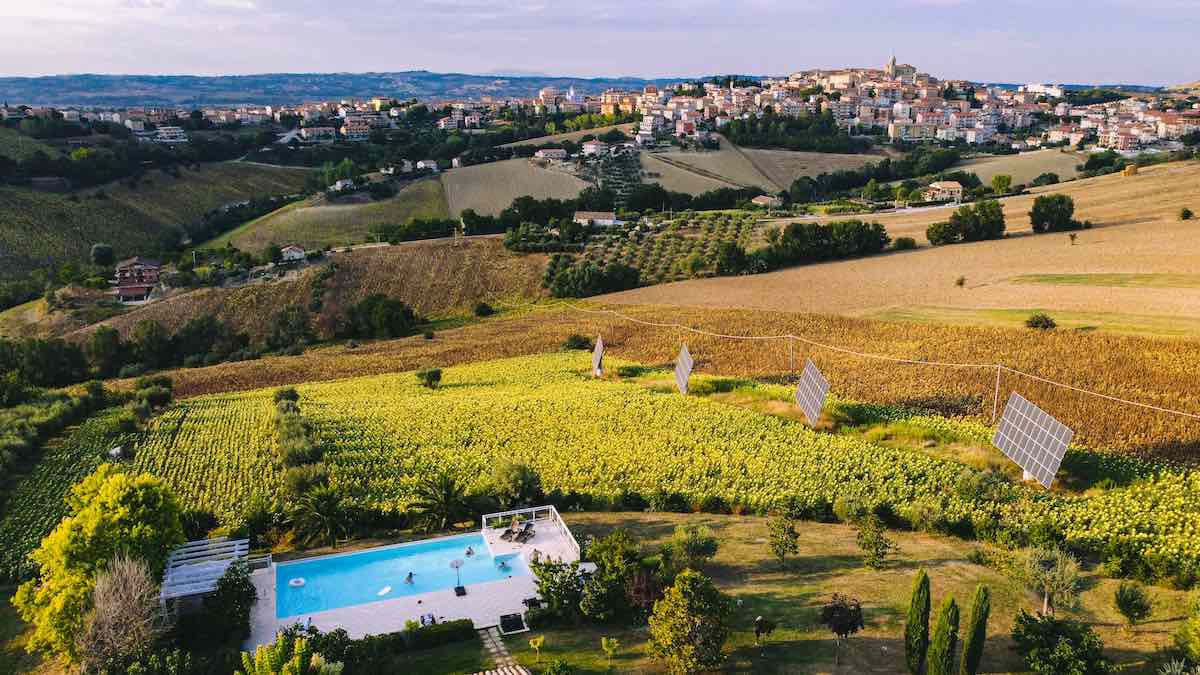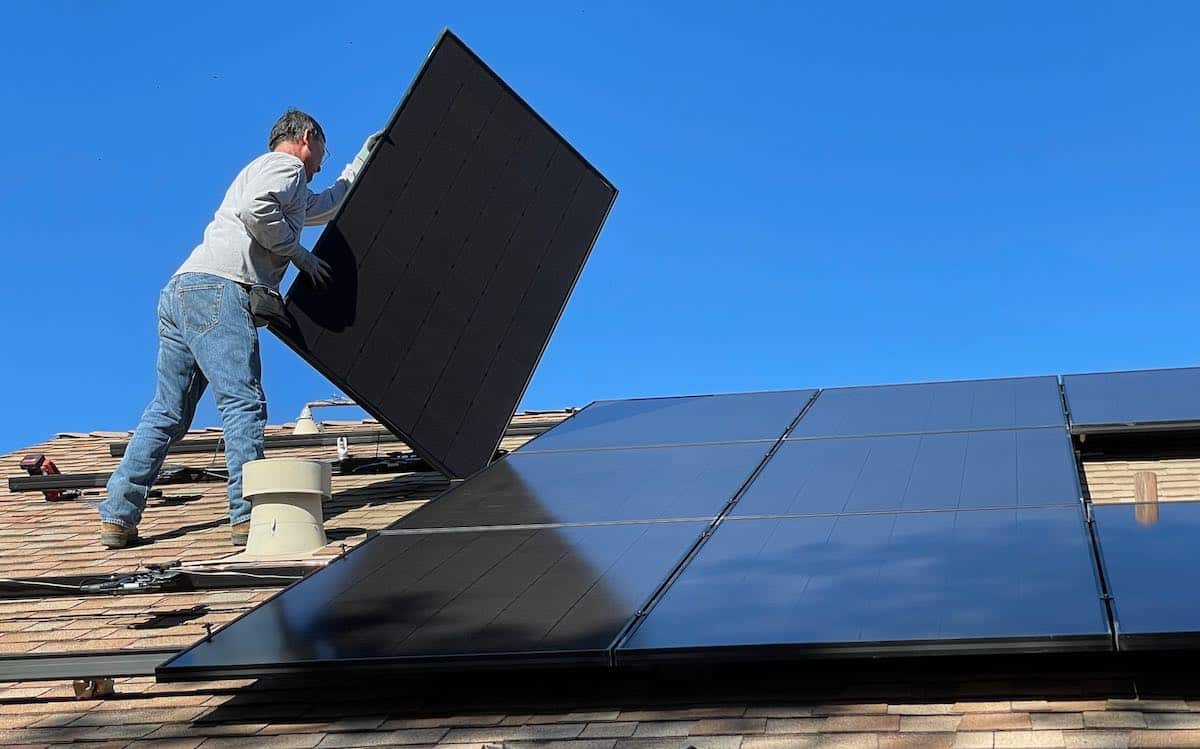Picture yourself basking in the sun beside your shimmering pool, sipping a cold lemonade, while your pool pump hums away, powered by the very sunlight that’s perfecting your tan. Sounds like a perfect summer day, doesn’t it?
Welcome to the world of solar-powered pool maintenance, where your pool pump and the sun work in harmony, bringing not just efficient pool cleaning but also considerable savings on your energy bill.
However, harnessing the power of the sun for your pool pump isn’t as simple as flipping a switch. If you’re a pool owner contemplating the switch to solar, or you’ve already embraced this eco-friendly option, you might be pondering the optimal time to run your pool pump for maximum efficiency.
In this blog post, we’ll delve into understanding the best operating hours for your solar-powered pool pump. We’ll be looking at the ‘why’ and ‘how’ of aligning pump operations with the sun’s schedule and even discuss how to adjust the setup for efficient use.
Running your pool pump with solar power is an environmentally friendly and cost-effective way to keep your pool sparkling clean. So, grab your sunhat and let’s take a dive into the sunny world of solar-powered pool pumps. Let the sun power up your pool maintenance while you relax and enjoy the clear blue water. After all, nothing beats a well-kept, eco-friendly pool that also respects your wallet.
Benefits of Running the Pool Pump with Solar Panels
Before we delve into the specifics of timing, let’s first discuss why running your pool pump with solar panels is beneficial.
By harnessing the sun’s energy, you can significantly reduce your electricity costs while also minimizing your carbon footprint.
Solar power is clean, renewable, and abundant during daylight hours.
Additionally, running your pool pump regularly helps maintain water circulation and prevents stagnation, leading to healthier water quality.
Factors to Consider for Optimal Pump Operation
To determine the best time to run your pool pump with solar panels, there are a few factors that need consideration:
- 1. Duration of Daylight Hours: Since solar panels generate energy only during daylight hours, it makes sense to align your pool pump operation accordingly. You want to maximize the amount of sunlight available for energy production.
- 2. Weather Conditions: Cloudy or overcast days can impact solar panel performance as they reduce sunlight exposure. It’s essential to be mindful of weather conditions when deciding when to run your pool pump.
- 3. Energy Consumption Patterns: Analyzing your household’s energy consumption patterns can help identify peak usage times when running additional appliances simultaneously may strain power generation from solar panels.
The Importance of a Solar Pool Cover
Now that we understand the factors affecting optimal pump operation let’s discuss how using a solar pool cover can further enhance efficiency:
- 1. Reduction in Water Evaporation: A solar cover acts as a barrier between your swimming pool and external elements like wind and heat. By keeping it on while running the pool pump, you can minimize water evaporation and conserve precious resources.
- 2. Decreased Electricity Costs: Evaporation is a significant contributor to heat loss from your pool. By reducing water evaporation, you won’t need to heat your pool as frequently, resulting in lower electricity costs.

Determining the Best Time to Run the Pool Pump with Solar Panels
Choosing the optimal time to run your pool pump with solar panels can be streamlined by implementing a couple of strategic approaches.
Firstly, harmonizing your pump operation with the sun’s schedule can greatly enhance your utilization of solar power.
Simply put, run your pump during the hours when the sun is bright and high in the sky. This alignment allows you to leverage solar power to the fullest and reduce dependence on grid electricity.
Additionally, a savvy approach would be to monitor your household’s energy consumption patterns. This data can provide valuable insights into the periods of high and low energy usage in your home.
Running your pool pump during periods of lower demand, in balance with the energy produced by your solar panels, can lead to a more efficient overall energy management.
So, instead of relying on a preset schedule, consider these two strategies. In the light of day, power up your pool pump with the sun’s help, and in your house’s energy rhythm, find the low-demand periods to work your pump.
This will help you get the most out of your solar panels and pool pump, both saving you money and contributing to a greener environment.
Maximizing Efficiency and Cost Savings
Enhancing the efficiency of running your pool pump with solar panels, and consequently amplifying the cost savings, can be achieved through some mindful practices.
First, consider adapting the runtime of your pool pump to align with the changing daylight hours across the seasons.
In essence, as the daylight hours extend during the summer months, so should the runtime of your pool pump. This allows you to take full advantage of the additional sunlight available during these longer days.
Additionally, stay proactive in monitoring your energy generation from the solar panels and juxtapose this data with your household usage patterns.
Regularly assessing this information can empower you to make data-driven decisions about when to operate your pool pump.
By doing so, you ensure that your pump’s operations align with the periods of highest solar power production, promoting maximum efficiency.
In short, a mindful adaptation to seasonal daylight changes and a regular analysis of your energy generation and consumption patterns can put you on a path to greater efficiency and cost savings.
You’ll not only see the benefit in your power bills but also contribute positively to a more sustainable environment.
Best Practices for Running the Pool Pump with Solar Panels
To ensure optimal operation of both your solar panels and pool pump system, follow these best practices:
- 1. Regular Maintenance and Cleaning of Solar Panels: Keep your solar panels clean and free from debris to maintain their efficiency levels. Regularly inspect them for any damage or issues that may impact their performance.
- 2. Optimizing Pool Pump Settings for Efficient Operation: Understand how to optimize your pool pump settings for efficient operation. Adjusting variables like speed, flow rate, and duration can help minimize energy consumption while still maintaining the desired pool water quality.
Frequently Asked Questions about the Best Time to Run Pool Pump with Solar Panels
Yes, running your pool pump on cloudy days is still beneficial as solar panels can generate some power even when sunlight is limited.
Absolutely! It is perfectly safe to run the pool pump while keeping the solar pool cover on. In fact, it helps conserve energy and minimize water evaporation.
Yes, during summer months when there are longer daylight hours, extending the pump’s runtime may be necessary to take full advantage of solar panel energy generation.
In Summary
Mastering the use of solar panels to power your pool pump involves a balance of careful observation and strategic planning.
Key factors that can guide your decisions include daylight hours, seasonal changes, and your unique energy consumption patterns.
Synchronizing the operation of your pool pump with peak daylight hours allows you to fully leverage the power of the sun, bringing both efficiency and cost savings to your doorstep.
Additionally, adapting your pump’s runtime to the varying daylight hours across different seasons can boost this efficiency even further.
Regularly monitoring your energy generation and consumption patterns then completes the puzzle, enabling you to make data-driven decisions for optimal pool pump operation times. In the end, these practices ensure not only an effectively maintained pool, but also a more sustainable, cost-efficient household.
